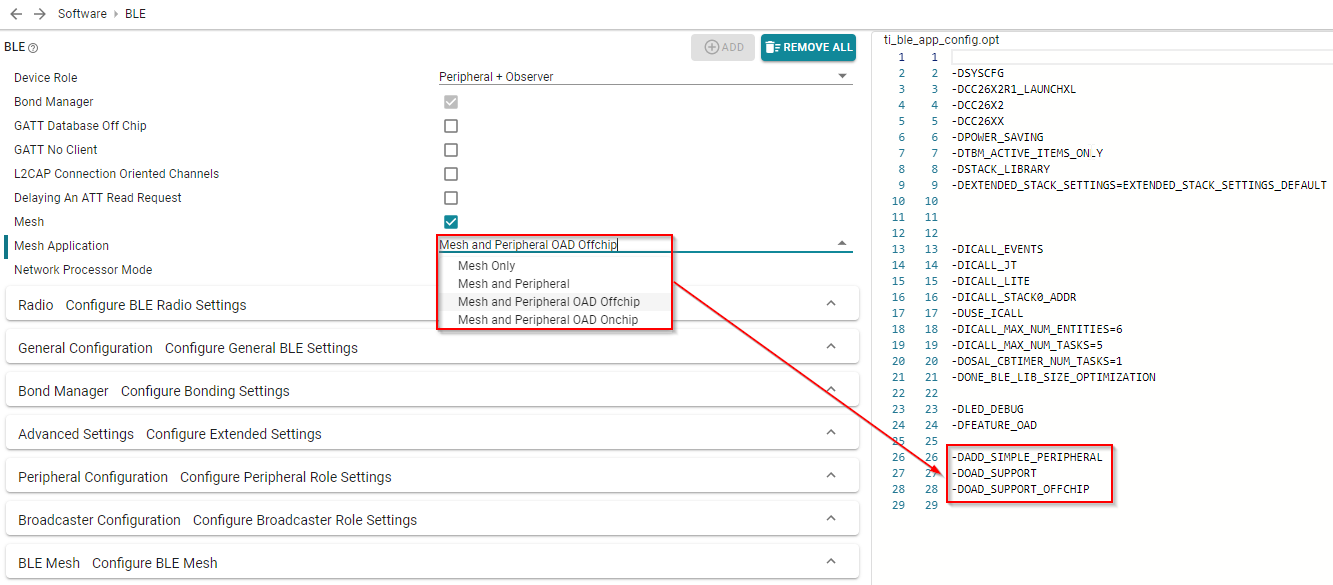TI Bluetooth Mesh and OAD¶
The following section covers BLE Over the Air Download (OAD) in the context of Bluetooth Mesh applications. For general OAD information, please refer to the OAD Guide Introduction for more details about OAD.

Figure 143. Mesh OAD Application Configuration Overview¶
Figure 143. shows the options and relevant defines that enable OAD support in the simple_mesh_node application.
When a simple_mesh_node is configured to support OAD, the node concurrently supports both a BLE connection in parallel with Bluetooth mesh support. This means that a mesh node will send both connectable advertisements (as a peripheral for OAD), and also advertise/receive mesh network payloads over the advertisement (PB-ADV) bearer (as a peripheral + observer).
Once the OAD is started, the OAD distributor device will connect to each mesh node using a typical GATT based connection. During this time, the OAD distributor will send the new firmware over the air to the mesh node in successive blocks.
If off-chip OAD is used, the Bluetooth mesh node will continue to function normally while the OAD is in progress. This means that the application sends mesh advertisement payloads while still connected to the OAD distributor.
If on-chip OAD is used, the Bluetooth mesh stack will not operate concurrently with the BLE connection once the OAD has started. In this case, the BLE connection is prioritized to complete the OAD and all mesh operations will resume once the device restarts and the OAD is completed successfully.
Warning
Proxy mesh nodes do not support the OAD feature. Proxy nodes use the GATT bearer to translate mesh network information to legacy BLE devices. For this reason, it cannot also be used to perform an OAD.